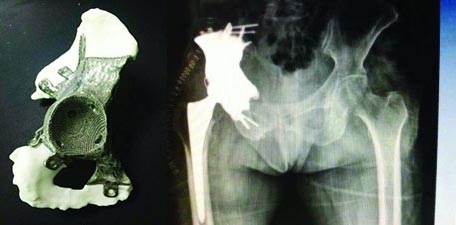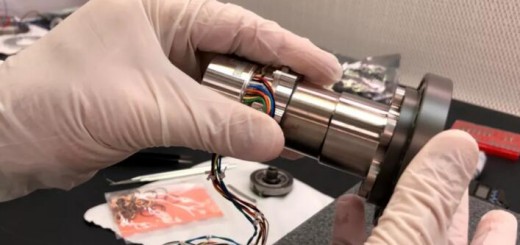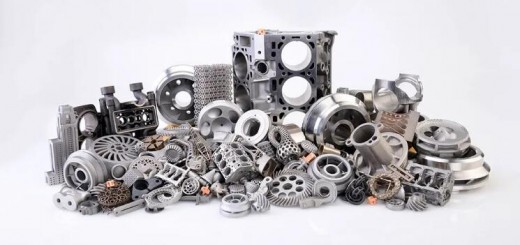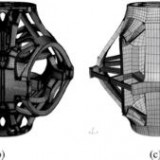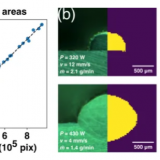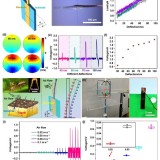癌细胞发生骨转移,带给患者的是无比的疼痛,并造成瘫痪在床无法下地行走的后果。不幸中的万幸是,患者遇到了3D打印技术,把盆骨处的局部肿瘤切除后,采用侧髋臼的数字模型,镜像地做了一个3D打印的髋臼,和患者本身切除的坏损骨头完全一样并能实现下地行走的目的。2014年11月6日,吉大二院骨科医院院长王金成教授领衔的关节外科团队使用3D打印技术为一名62岁女性成功实施3D半骨盆置换手术,让这位几乎因疼痛就要瘫痪在床的病人重新站起来。
半年前,打完羽毛球,鲁女士感觉自己右腿疼,经常运动,偶尔的运动扭伤避免不了。她按摩几天后,疼痛感稍有缓解,每次一疼,她就会这样按摩治疗。直到两个月前,腿部疼痛感突然加剧,严重时无法下地。到医院拍腿片也没发现问题,经关节外科王金成教授会诊,疼痛最终锁定在骨盆处。果真,核磁片子出来后发现,疼痛并不是运动伤而是因为肾透明细胞癌转移到了骨头,造成右侧髋部无法受重行走并产生疼痛感。
“癌细胞转移到骨头上,怎么才能站起来呢?”解决的办法只有一个就是手术。然而,骨盆区肿瘤由于解剖部位复杂、创伤大、出血量多、手术操作复杂、风险极大,术中可能因大出血或瘤体切除后患者血压突然下降而危及生命,而且手术操作稍有不慎,就会造成术后骨盆负重功能差或下肢功能丧失等后遗症。
就在鲁女士以为自己手术“没戏”的时候,王金成教授和他的团队们给她带来好消息。“半侧骨盆次全切之后采用3D打印技术定制的假体可获得更好的治疗效果。”听到医生这么说,鲁女士马上同意。接着,一场专属鲁女士的“私人定制”手术也将开始。为了获得一个与鲁女士病情更加符合的人工假体,关节外科团队经过反复讨论和磋商,最终确定了假体模型,并利用3D打印技术制作了钛金属假体。保障手术过程无菌防护,医护人员也穿上手术太空服,在局部肿瘤切除的同时,把3D打印的与患者自身髋臼完全一样的假体髋臼植入骨盆,并用来固定在切除部位,使髋臼得到重建,手术时间也仅仅耗时3小时。
黄岚峰副教授找来一个医生专用模型向记者介绍了手术过程。据他介绍,3D打印出来的内置物是骨科常见的钛合金材质,它可以有良好的生物相容性,在人体内不会发生排斥反应,也不会对人体造成伤害。
“我们这个技术又一次创了纪录。”6日上午,参与手术的黄岚峰副教授提起刚结束的手术,仍难以掩饰心中的激动和喜悦。他告诉记者,目前,在国内已有采用3D打印技术置换骨盆、肩关节、膝关节等成功案例,但用于半骨盆置换手术,在吉大二院骨科医院仍是东北三省的首例。据了解,大家较为熟悉的3D打印技术是以塑料为材料,而在医学上,尤其是骨科领域,3D打印技术使用的材料是与人体高度相容的钛合金。钛合金3D打印技术的学名是电子束熔融(EBM),这种技术可以将与人体高度相容的钛合金作为材料,通过对专业医学图像数据做进一步处理,用3D技术打印出与患者解剖结构高度一致的钛合金植入物。
来源:新浪网
When cancer cells metastasize to bone, this brings patients tremendous pain. The patient – Ms. Lu, has suffered from cancer and cannot walk because the cancer cells have metastasized in her bone. However, she might be able to walk thanks for Dean Professor Wang Jin-cheng from the department of orthopedics from the Second Hospital of Jilin University. Dean Wang has used 3D printing technology to help Ms. Lu during the surgery to replace the semi pelvic with a 3D printed part.
Two months ago, Ms. Lu’s pain in her leg suddenly increased, then she went to the hospital. Professor Wang Jin-cheng from the hospital said that the pain came from her pelvic area. Indeed, the pain is not sports injuries, but because of renal clear cell carcinoma metastatic to the bone, and this caused the walking pain.
Due to the location of the pelvic area, to remove the tumor and the bone will cause large trauma with large amount of bleeding, so the surgery is very challenging and complex. Professor Wang Jin-cheng and his team used 3D printing technology to produce titanium prosthesis. The operation was only 3 hours, and the 3D printed prosthesis fit well in the patient’s body.
The technology to 3D printing the prosthesis is electron beam melting (EBM) technology. Associate professor Huang Lan-feng said that the titanium alloy material has good biocompatibility, and will not cause harm to human body.
Translated by 51shape.com

